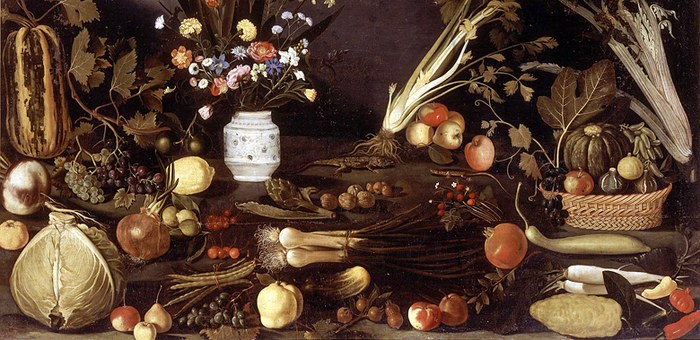In this phase we examined 388 reproductions referring to 14 painters active in Italy during the seventeenth and eighteenth centuries: Jan Brueghel il Vecchio, Maestro di Hartford, Tommaso Salini, Pietro Paolo Bonzi, Agostino Verrocchi, Giovanna Garzoni, Luca Forte, Maestro della Natura Morta Acquavella, Giacomo Recco, Mario Nuzzi detto Mario dei Fiori, Giovanni Stanchi, Nicola Malinconico, Felice Rubbiani, Carlo Antonio Crespi.
Identifying species raised various difficulties, due perhaps to the quality of the image, the lack of colour or the poor condition of the painting photographed. Even when the image was clear, identification might be complicated by the position of the plant (in the background or in shadow), lack of some parts of it (often indispensable for an attribution) and the close resemblance between vegetable varieties and cultivars belonging to different species or even different families – a common occurrence with double-flowered varieties. With some "critical" plants like roses it was always problematical to decide the species. In that case only the genus could be indicated (e.g. Rosa sp.).
Among edible species problems of recognition concerned pumpkins, melons and tubers which are very similar in different species belonging to the same family or even different families. One should remember that many cultivated hybrids, whether ornamental or edible, may have become rare nowadays or vanished without any modern equivalent.
By consulting the 2015 version of Fitocronologia di Maniero (2015) which updates and integrates Cronologia della Flora Italiana by Pier Andrea Saccardo (1909, 1917) and gives the date when exotic species were introduced into Italy, we were able to check whether the species identified was already being cultivated in Italy (or had naturalised) at the time when the painter in question was working, and thus confirm the identification.
For every single image of every painter we listed the botanical species recognised, indicating common names and scientific names: a total of 3,509 entries. With Italian flora we adopted the Pignatti nomenclature (1982); with exotic and cultivated species we followed "The Plant list – a working list of all plant species" (www.theplantlist.org).
So far roughly 270 taxa have been identified.
The first results of botanical analysis may be viewed in the downloadable contributions alongside.
Recognition has now moved on to colour images of paintings by other authors. As data are acquired, they will be added to the database.
